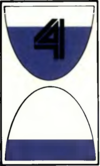
Research
Research was one of the principal missions of the first national highway program in the United States and is, in fact, the oldest continuous Federal highway activity. The scope of federally conducted or assisted research encompasses all of the Federal highway programs and every facet of highway transportation—as a national resource and as a principal force in the social and economic well-being of the people and Government.
Early History
The history of highway research in the Federal Government began with the establishment of the Office of Road Inquiry (ORI) in the Department of Agriculture in 1893. Prior to that date, there had been numerous investigations and experiments, but they were primarily scattered and isolated events. With the creation of the ORI, whose primary mission was to investigate the best methods of roadmaking and to assist in disseminating this information, a formal, organized research program began. In 1894, the ORI issued 9 bulletins on such subjects as State laws, roadbuilding materials, and railroad rates for hauling those materials.
Demonstration trains, originally known as “Good Roads Trains,” traveled throughout many parts of the Nation in the 1890’s. These trains were fitted with construction and roadbuilding machinery and equipment as well as section models of macadam and other types of road construction.
States, local authorities, railroad companies and the manufacturers of earth-handling and roadbuilding machinery also cooperated in building short sections of quality roads to demonstrate good roadbuilding practices. The emphasis was on drainage, surface courses, and maintenance. Local materials and manpower were used under the general supervision of Federal engineers. Sometimes on “Good Roads Day,” as many as 500 local farmers would take a walking tour of a demonstration section being constructed. In 1910, the annual report of the Office of Public Roads reported that 55 object lesson and experimental roads had been completed during the fiscal year.[1]
Although information on specific research activities in the early 1900’s is rather fragmentary, the most substantial continuing effort was testing large numbers of samples of highway materials, including aggregate, cement, soil, asphalt, and tar. A Federal laboratory was established in 1900 for mechanical and chemical investigation of these materials. The results of the tests were analyzed to obtain a general overview of the characteristics of available materials and their suitability for roadbuilding purposes. Samples were sent in from all areas of the country and were tested free of charge until 1924, when it was announced that materials would no longer be tested for the general public. In the early years, the laboratory developed important tests to help improve bituminous construction.
In addition, statistical and economic evaluations were made in 1910 of the effect of road improvements on communities. Some work was also undertaken on coatings and coverings for iron and steel corrosion. In 1911 there were some object lesson projects on culverts, and a bulletin was published on highway bridges.
320
- ↑ Bureau of Public Roads Annual Report, 1910, p. 769.
